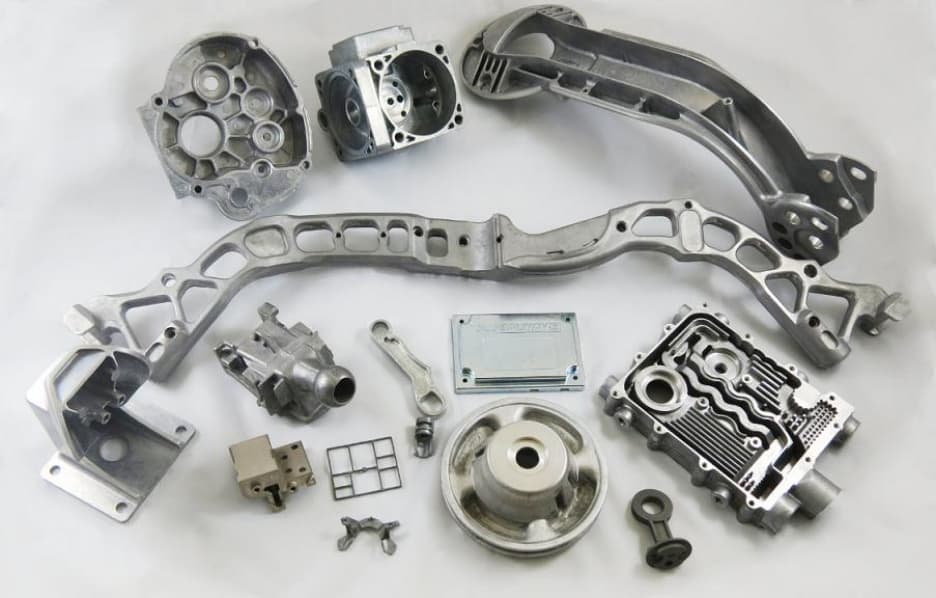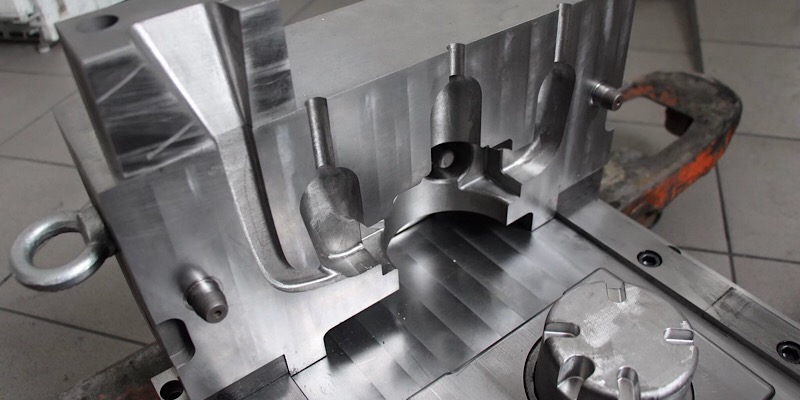Exploring the Important Applications and Utilizes of Aluminum Shop in Modern Manufacturing
Aluminum factories play a vital role in modern-day manufacturing, offering diverse markets with their unique residential or commercial properties. From auto parts that boost fuel performance to aerospace structures that focus on weight, aluminum's convenience is apparent. Its applications encompass construction and customer electronic devices, highlighting its toughness and energy effectiveness. The technologies in light weight aluminum spreading methods and future fads call for a closer examination, as they may redefine its influence on production.
The Function of Light Weight Aluminum Foundries in Automotive Manufacturing
As the automobile market significantly focuses on lightweight materials to enhance fuel effectiveness and performance, light weight aluminum factories have actually come to be essential contributors to manufacturing processes. These factories focus on creating elements that satisfy the rigid needs of contemporary automobiles, such as engine blocks, transmission real estates, and architectural aspects. Light weight aluminum's positive properties-- such as high strength-to-weight proportion, deterioration resistance, and superb thermal conductivity-- make it an ideal selection for auto applications.
Light weight aluminum factories use advanced spreading methods, including die spreading and sand casting, to create resilient and detailed components. This capability permits makers to optimize layouts for performance while minimizing weight. Using aluminum additionally supports sustainability objectives, as it is extremely recyclable and reduces power consumption in automobiles. By promoting the integration of light weight aluminum into vehicle design, shops play an essential role in forming the future of the automotive market, advertising effectiveness and technology across the board.
Aerospace Applications: Lightweight Solutions for Trip
Aluminum factories play a substantial role in the aerospace market, where the demand for light-weight products is extremely important for enhancing fuel performance and performance in aircraft. The unique residential or commercial properties of light weight aluminum, including its high strength-to-weight proportion and corrosion resistance, make it a suitable choice for different aerospace elements. These parts include architectural parts, engine housings, and touchdown equipment, which add to overall aircraft efficiency.
Using aluminum alloys, specifically those created via sophisticated casting methods, enables for the manufacturing of elaborate layouts and intricate shapes while decreasing weight. In addition, light weight aluminum's recyclability aligns with the aerospace market's sustainability objectives, lowering environmental influence. With constant innovations in aluminum factory modern technologies, suppliers can maximize manufacturing procedures, causing raised performance and minimized expenses. As the aerospace market progressively prioritizes developments that enhance efficiency, light weight aluminum factories will remain integral to developing light-weight options for contemporary flight.
Structure and Construction: Enhancing Architectural Stability
In the building and building and construction sector, a considerable emphasis is positioned on boosting structural integrity via using aluminum. Recognized for its high strength-to-weight ratio, light weight aluminum supplies sturdiness without compromising on weight, which is critical in modern-day architectural layouts. Its resistance to rust further assures longevity, making it an ideal product for various architectural components, consisting of beams, frameworks, and cladding.
Aluminum likewise promotes ingenious design opportunities, enabling engineers and engineers to develop aesthetically pleasing frameworks while maintaining safety and security requirements. The product's versatility allows its application in both commercial and household projects, from high-rises to bridges. Additionally, improvements in light weight aluminum foundry methods have actually boosted the precision of light weight aluminum components, ensuring they fulfill strict building regulations. In general, the assimilation of aluminum in building not just enhances structural honesty but likewise adds to lasting building methods, provided its recyclability and energy-efficient manufacturing approaches.
Consumer Electronic Devices: The Increase of Aluminum in Innovation
In the domain name of customer electronic devices, aluminum has acquired prominence due to its lightweight design advantages and superior thermal conductivity. This shift not just boosts item transportability yet likewise enhances gadget performance by efficiently dissipating heat. As technology remains to evolve, the role of light weight aluminum in developing sleek and efficient tools is significantly significant.
Light-weight Style Advantages
As consumer electronic devices progress, the demand for light-weight yet sturdy materials has risen, making aluminum a progressively popular selection amongst producers. Its reduced thickness allows for the creation of streamlined devices that are very easy to lug and use, considerably boosting mobility. The strength-to-weight ratio of light weight aluminum guarantees that items can stand up to daily damage without jeopardizing performance. In addition, the malleability of light weight aluminum enables suppliers to develop detailed shapes and kinds, even more adding to ingenious looks and functionality. This lightweight feature likewise plays an important function in power efficiency, as lighter gadgets call for less power to run. Therefore, aluminum not just meets the progressing visual needs however additionally lines up with the contemporary emphasis on sustainability in customer electronics.
Thermal Conductivity Perks
Thermal conductivity is a vital aspect in the efficiency of consumer electronics, and light weight aluminum excels in this domain. Its high thermal conductivity enables efficient heat dissipation, which is crucial for maintaining optimal operating temperatures in gadgets such as mobile phones, laptop computers, and pc gaming consoles. By facilitating rapid heat transfer away from sensitive components, aluminum helps avoid overheating, thus enhancing performance and prolonging device longevity. The light-weight nature of light weight aluminum matches its thermal residential properties, making it a perfect choice for mobile modern technology. As makers progressively prioritize efficiency and power efficiency, light weight aluminum's duty in thermal administration becomes a lot more considerable, resulting in its expanding fostering in modern digital styles. This trend emphasizes aluminum's importance in customer electronics innovation.
Marine Sector: Rust Resistance in Harsh Environments
Deterioration resistance is an essential aspect in the marine sector, where devices and frameworks are regularly exposed to harsh deep sea atmospheres. Light weight aluminum, especially in its alloy kinds, provides substantial benefits in this regard. Its natural oxide layer gives a protective obstacle that stops corrosion, making it excellent for vessels, anchors, and other aquatic applications.
Marine-grade aluminum alloys, such as 5083 and 6061, are especially developed to endure the corrosive impacts of deep sea and atmospheric problems. These alloys not only stand up to rust yet likewise maintain structural integrity and stamina over time. Applications range from hulls and superstructures of ships to elements in overseas platforms.
The lightweight nature of aluminum further enhances its viability, enabling improved gas performance and convenience of handling - aluminum foundry. As the aquatic sector continues to focus on sturdiness and efficiency, light weight go to this web-site aluminum continues to be an important material option for withstanding rust in requiring aquatic settings
Advancements in Light Weight Aluminum Spreading Techniques
While typical light weight aluminum spreading approaches have served the industry well, recent developments are transforming the landscape of aluminum manufacturing. Techniques such as 3D printing of molds and cores are gaining grip, permitting for rapid prototyping and reduced preparations. This advancement makes it possible for suppliers to develop intricate geometries that were formerly tough to accomplish with traditional casting methods. In addition, improvements in die-casting innovation, including the use of high-pressure die-casting (HPDC), have actually boosted the accuracy and surface area finish of cast light weight aluminum elements, causing improved performance in various applications.
Moreover, the fostering of investment casting has actually enabled greater style freedom and reduced product waste. Aluminum Casting. Technologies in alloy structures are also substantial, as they enhance mechanical residential properties and rust resistance. Overall, these growths not only enhance manufacturing processes yet also add to more sustainable techniques within the aluminum factory sector, making it adaptable to the advancing demands of modern-day production
Future Patterns in Light Weight Aluminum Foundry Production
The future of aluminum foundry manufacturing is positioned for considerable improvement with automation, improving efficiency and precision in making procedures. Sustainable practices are increasingly coming to be a concern, as factories seek to decrease their ecological effect while meeting expanding regulative demands. In addition, innovations in alloy advancement will make it possible for the production of stronger, lighter materials customized for diverse applications, driving innovation in the market.
Automation in Foundry Processes

Lasting Manufacturing Practices
A growing focus on lasting production practices is reshaping the future of light weight aluminum foundry production. Sector leaders are progressively embracing energy-efficient technologies and reusing efforts to reduce waste and reduce carbon impacts. The use of recycled aluminum substantially lowers power usage compared to main aluminum manufacturing, making it a preferred option for environmentally aware makers. In addition, ingenious casting methods are being developed to improve material effectiveness and reduce discharges. Firms are likewise buying renewable resource sources, such as solar and wind, to power their operations sustainably. aluminum metal casting. By integrating these techniques, the aluminum factory sector not only satisfies governing requirements however additionally responds to customer need for greener products, eventually leading the way for a much more lasting production landscape
Advanced Alloy Development
Improvements in light weight aluminum alloy development are set to play a substantial duty in the future of foundry production, specifically as sustainability and efficiency demands intensify. The market is significantly focusing on producing high-strength, light-weight alloys that can hold up against extreme conditions while lessening ecological impact. Researchers are discovering cutting-edge structures, such as aluminum-lithium and aluminum-scandium alloys, which guarantee boosted mechanical residential or commercial properties and lowered weight. Additionally, the combination of innovative manufacturing strategies, consisting of additive manufacturing and precision spreading, permits even more complicated geometries and lowered product waste. As regulative stress and customer choices change in the direction of greener choices, the growth of recyclable and energy-efficient alloys will certainly be crucial. The future landscape of aluminum foundry production depends upon these improvements in alloy modern technology.

Frequently Asked Inquiries
What Are the Environmental Influences of Aluminum Foundry Workflow?
Aluminum shop operations can result in considerable environmental effects, including greenhouse gas exhausts, energy intake, and waste generation. Additionally, inappropriate management of reference contaminants might result in dirt and water contamination, influencing local environments and areas.
How Does Aluminum Recycling Affect Factory Processes?
Light weight aluminum recycling enhances factory procedures by giving an affordable raw product, lowering energy consumption and discharges. This lasting technique increases effectiveness, lessens waste, and sustains the round economic situation, try this web-site benefiting both manufacturers and the atmosphere.
What Precaution Are Applied in Light Weight Aluminum Foundries?
Light weight aluminum foundries implement various safety steps, including personal protective equipment, proper ventilation systems, regular safety training, fire prevention protocols, and devices upkeep treatments to lessen threats and guarantee a safe working environment for all employees.
How Do Foundries Guarantee Quality Assurance in Aluminum Casting?
Factories guarantee quality control in aluminum spreading via strenuous product examinations, exact temperature monitoring, standardized treatments, and routine testing of cast items. These actions assist preserve consistency, lower issues, and fulfill sector requirements properly.
What Are the Price Consider Light Weight Aluminum Factory Production?
Expense consider light weight aluminum factory production consist of basic material costs, power usage, labor prices, equipment upkeep, and overhead costs. Furthermore, production volume and complexity of layouts substantially affect overall production prices and productivity.
As the automobile industry significantly prioritizes lightweight products to improve fuel efficiency and efficiency, aluminum shops have actually ended up being vital contributors to making processes. Light weight aluminum foundries play a substantial role in the aerospace market, where the need for lightweight materials is paramount for boosting fuel performance and performance in aircraft. In addition, developments in light weight aluminum shop strategies have actually enhanced the accuracy of aluminum parts, guaranteeing they satisfy rigorous building codes. While standard aluminum spreading methods have actually served the sector well, recent developments are changing the landscape of aluminum manufacturing. The use of recycled aluminum substantially lowers energy intake compared to main light weight aluminum production, making it a recommended option for ecologically mindful makers.